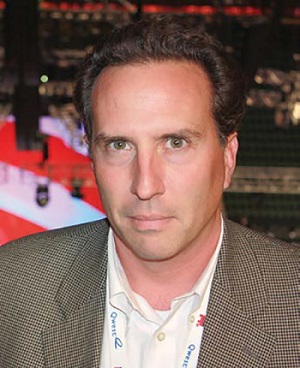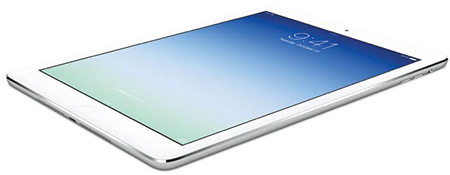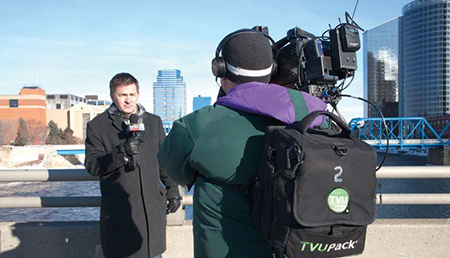Bonded-Cell Vendors Cope With Changing Speed Limits

Chris Crump, senior director of sales for ComrexSEATTLE—ENG crews that use cellular live-shot gear in the field applaud or curse the cellular networks on which they rely on a day-to-day basis. Can we get connected? Will the connection hold? They collect anecdotal evidence about what worked yesterday, what didn’t work today.
Designers and builders of the cellular liveshot equipment news crews are looking not only at the present but off into the future, assessing what new technology the cellular network operators will be rolling out. They’ve got to plan their next generation of products to work with tomorrow’s networks as well.
DON’T EXPECT MIRACLES
The first thing liveshot equipment providers point out is not to expect any miracles around the corner. “I don’t see them rolling out 5G or something, or suddenly be able to offer us a 100 Mbps/4G link,” said Jon Landman, vice president of sales for Teradek, a Vitec-owned developer of IPbased wireless video technology in Irvine, Calif. “This has been talked about year-in and year-out, but I haven’t seen anything being demonstrated, or even discussed.”
That said, there have been network improvements, with wireless providers touting 4G Long-Term Evolution (4G LTE) for wireless communication of high-speed data for mobile phones. “The advantage of [4G] is that you are basically—particularly from a cellular uplink system standpoint— able to do more with less,” said Eric Chang, vice president of marketing for TVU Networks, a developer of wireless IP video ENG technology in Mountain View, Calif. “So you can use fewer modems, but the bandwidth is just as strong.”

The modem in the iPad Air supports all wireless bands worldwide. LTE didn’t deploy everywhere in the blink of an eye, according to Ken Zamkow, vice president of marketing for LiveU, IPbased wireless video technology in Hackensack, N.J. Although LTE was launched around 2010, “in reality, it was just one carrier at first—Verizon—then one-by-one the other carriers joined them.” As additional carriers launched their LTE networks, LTE-capable modems had to be added for the cellular bands used by each carrier. This could be done under a lease agreement, service contract or buy-back program.
SOME NEW ACRONYMS
Now you can add a couple of new acronyms to your vocabulary. The first is XLTE from Verizon, which is basically the same technology as LTE, but deployed on new wireless spectrum the company bought a few years ago. For cellular liveshot equipment to access it, it will require new modems. Zamcow said that, in some sense, “everyone benefits from XLTE, because even people who don’t utilize it get some of the bandwidth freed up when others do use LTE bandwidth.”
However, new acronym number two, LTE-A (for LTE-Advanced), could provide twice the current LTE data rates. According to AT&T—which will be the first to deploy the service—LTE-A will require moving to the newer antenna technology that allows for disparate frequency bands to be banded together. That means new antennas in addition to new cellular modems to use LTE-A with existing liveshot gear.
Get the TV Tech Newsletter
The professional video industry's #1 source for news, trends and product and tech information. Sign up below.
Bogdan Frusina, founder and CTO for Dejero, a bonded cellular provider in Waterloo, Ontario, says that there’s usually a big gap between introduction and full deployment of such new technology. “We’ve seen this with LTE and we’ll see this with XLT from Verizon: it just doesn’t happen overnight,” he said. “The investment dollars don’t make sense to put it everywhere right away. But the long-term advantage of this, potentially, is that it will provide cheaper bandwidth and allow more flexibility and throughput.”

Grand Rapids, Mich., NBC affiliate WOOD-TV reports live with the TVUPack.THE DISAPPEARING MODEM
Chris Crump, senior director of sales for video-over-IP provider Comrex in Devens, Mass., pointed out a change coming from cellular carriers that has forced vendors to alter the fundamental design of cellular liveshot gear. “They’re looking at discontinuing all USB modems, and going instead with MiFi devices instead,” he said. “So that leaves us having to look for solutions we can come up with for our devices, looking for some embedded solutions or some proprietary modem solutions that will basically let you pop anybody’s SIM chip in.”
He said a major challenge liveshot gear makers face is coming up with modems not only for domestic cell carrier networks, but for those worldwide. “We’ve actually found a single modem that supports all of the bands that are in use throughout the world—the iPad Air,” he said. “I’ve joked with our director of engineering, asking ‘why don’t you just disembowel an iPad Air and put the modem into our device?’ That’s not exactly practical. But we’re looking at solutions that are just short of doing that.”
LiveU’s Zamkow said that as his company (and presumably others) go from one generation of their equipment to the next, “we’re learning about the behavior of the networks, and the towers and so on. We keep improving our algorithm to better anticipate how the networks will behave, and how to route the data and send the data, and retrieve the missing data in a more efficient way.”
THE IMPORTANCE OF REDUNDANCY
While there is always the wish by customers to reduce liveshot latency by using a single modem that doesn’t have to go through a time-consuming bonding and unbonding process, Teradek’s Landman pushed the advantage of redundancy. “Using a single modem is like turning up as a wedding cameraman, and just bringing one camera,” he said. “It’s just not best practice. When you want to get that liveshot through, you’ve got to have a backup plan. A single cellular connection is OK, but there’s no backup, no redundancy, no ‘get out of jail card free’ kind of technology built in.”
TVU Networks’ Chang said his company has worked “to make our system as transmission media-agnostic as possible, which means not only cellular, but able to aggregate transmission systems for microwave, satellite, for Ethernet and WiFi. Within the last few months, we’ve made announcements about our partnership with Vislink, an established player in the microwave arena, and we have an integrated path that takes cellular and microwave and is able to aggregate those signals and transmit that.”
Finally, there’s a future-looking observation from Dejero’s Frusina: “We’re being asked about 2K and 4K. So now we have to create technology that allows 4K transmission from the field. And I’m pretty sure that everybody who reads this is going to call me crazy, but if people have to redo their entire facility, then they go ‘why should I design it just HD, we’ll do it all in 4K.’ That makes sense if you think about it. Why would I put my money into a technology that is current, rather than the one that is already at the forefront and be ready for that?
“I’m not saying anyone’s going newsgathering in 4K tomorrow. But the day after tomorrow? I don’t know.
